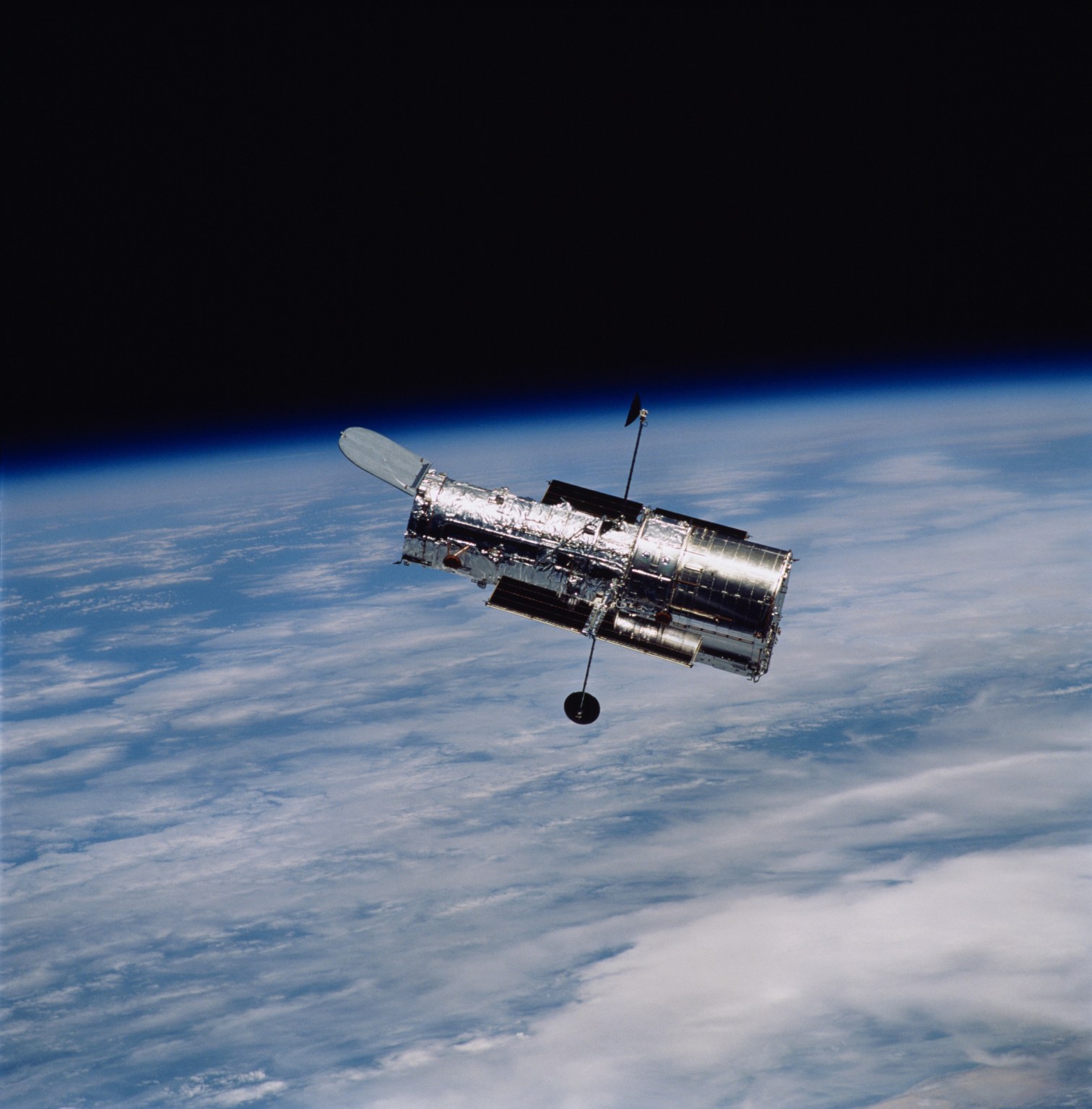1 min read
A Grazing Encounter Between Two Spiral Galaxies (NGC 2207 and IC2163)

In the direction of the constellation Canis Major, two spiral galaxies pass by each other like majestic ships in the night. The near-collision has been caught in images taken by NASA's Hubble Space Telescope and its Wide Field Planetary Camera 2.
The larger and more massive galaxy is cataloged as NGC 2207 (on the left in the Hubble Heritage image), and the smaller one on the right is IC 2163. Strong tidal forces from NGC 2207 have distorted the shape of IC 2163, flinging out stars and gas into long streamers stretching out a hundred thousand light-years toward the right-hand edge of the image.
Computer simulations, carried out by a team led by Bruce and Debra Elmegreen, demonstrate the leisurely timescale over which galactic collisions occur. In addition to the Hubble images, measurements made with the National Science Foundation's Very Large Array Radio Telescope in New Mexico reveal the motions of the galaxies and aid the reconstruction of the collision.
The calculations indicate that IC 2163 is swinging past NGC 2207 in a counterclockwise direction, having made its closest approach 40 million years ago. However, IC 2163 does not have sufficient energy to escape from the gravitational pull of NGC 2207, and is destined to be pulled back and swing past the larger galaxy again in the future.
The high resolution of the Hubble telescope image reveals dust lanes in the spiral arms of NGC 2207, clearly silhouetted against IC 2163, which is in the background. Hubble also reveals a series of parallel dust filaments extending like fine brush strokes along the tidally stretched material on the right-hand side. The large concentrations of gas and dust in both galaxies may well erupt into regions of active star formation in the near future.
Trapped in their mutual orbit around each other, these two galaxies will continue to distort and disrupt each other. Eventually, billions of years from now, they will merge into a single, more massive galaxy. It is believed that many present-day galaxies, including the Milky Way, were assembled from a similar process of coalescence of smaller galaxies occurring over billions of years.
This image was created from 3 separate pointings of Hubble. The Wide Field Planetary Camera 2 data sets were obtained by Debra Meloy Elmegreen (Vassar College), Bruce G. Elmegreen (IBM Research Division), Michele Kaufman (Ohio State U.), Elias Brinks (Universidad de Guanajuato, Mexico), Curt Struck (Iowa State University), Magnus Thomasson (Onsala Space Obs., Sweden), Maria Sundin (Goteborg University, Sweden), and Mario Klaric (Columbia, South Carolina).
About the Object
- R.A. PositionR.A. PositionRight ascension – analogous to longitude – is one component of an object's position.06h 16m 24.9s
- Dec. PositionDec. PositionDeclination – analogous to latitude – is one component of an object's position.-21° 22' 26"
- ConstellationConstellationOne of 88 recognized regions of the celestial sphere in which the object appears.Canis Major
- DistanceDistanceThe physical distance from Earth to the astronomical object. Distances within our solar system are usually measured in Astronomical Units (AU). Distances between stars are usually measured in light-years. Interstellar distances can also be measured in parsecs.35 Mpc (114 million light-years)
- DimensionsDimensionsThe physical size of the object or the apparent angle it subtends on the sky.The image is 2.5 arcminutes on the vertical side. NGC 2207 has a diameter of 143,000 light-years (44 kpc or 4'). IC 2163 has a diameter of 101,000 light-years (31 kpc or 3').
About the Data
- Data DescriptionData DescriptionProposal: A description of the observations, their scientific justification, and the links to the data available in the science archive.
Science Team: The astronomers who planned the observations and analyzed the data. "PI" refers to the Principal Investigator.Principal Astronomers: D.M. Elmegreen (Vassar College), B.G. Elmegreen (IBM Research Division), M. Kaufman (Ohio State University), E. Brinks (Universidad de Guanajuato, Mexico), C.Struck (Iowa State University), M. Thomasson (Onsala Space Observatory, Sweden), M. Sundin (Götenborg University, Sweden), M. Klaric (Columbia, SC) - InstrumentInstrumentThe science instrument used to produce the data.HST>WFPC2
- Exposure DatesExposure DatesThe date(s) that the telescope made its observations and the total exposure time.May 25, 1996; November 11, 1998, Exposure Time: 4.5 hours
- FiltersFiltersThe camera filters that were used in the science observations.F336W (U), F439W (B), F555W (V), and F814W (I)
- Object NameObject NameA name or catalog number that astronomers use to identify an astronomical object.NGC 2207, and IC 2163
- Object DescriptionObject DescriptionThe type of astronomical object.Merging Galaxies
- Release DateNovember 4, 1999
- Science ReleaseA Grazing Encounter between Two Spiral Galaxies
- Credit
Share
Details
Claire Andreoli
NASA’s Goddard Space Flight Center
Greenbelt, Maryland
claire.andreoli@nasa.gov































